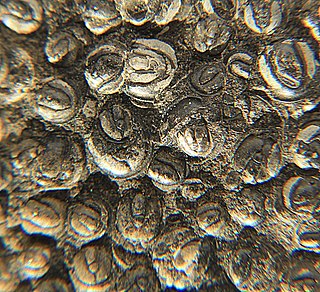
Agnostus is a genus of agnostid trilobites, belonging to the family Agnostidae, that lived during the late Middle Cambrian – early Upper Cambrian. It is the type genus of the family Agnostidae and is subdivided into two subgenera, Agnostus and Homagnostus.
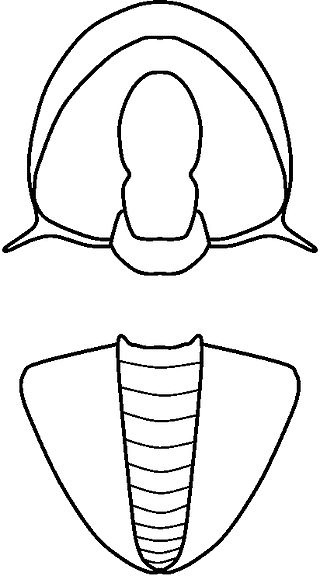
Acidiscus is a genus of eodiscinid trilobite belonging to the family Weymouthiidae Kobayashi T. (1943), Order Agnostida Salter (1864). It lived during the Botomian stage = late Lower Cambrian Stage 4 ; the upper Botomian boundary corresponds to base of the Middle Cambrian, Miaolingian Series and Wuliuan stage.

Acimetopus is a genus of eodiscinid trilobite belonging to the family Weymouthiidae Kobayashi (1943), Order Agnostida Salter (1864). It lived during the Botomian stage. = late Lower Cambrian Stage 4 ; the upper Botomian boundary corresponds to base of the Middle Cambrian, Miaolingian Series and Wuliuan stage.

Analox is a genus of eodiscinid trilobites belonging to the family Weymouthiidae Kobayashi T. (1943), Order Agnostida It lived during the Botomian stage. It can easily be distinguished from other trilobites by the two furrows that extend forwards and sidewards from the front of the glabella.
Leptochilodiscus [= Kerberodiscus Bassett et al., 1976] is a genus of Lower Cambrian eodiscinid trilobite belonging to the family Weymouthiidae, order Agnostida. It lived during the Botomian stage = late Lower Cambrian Stage 4 ; the upper Botomian Stage boundary corresponds to base of both the Middle Cambrian Wuliuan stage and Miaolingian Series.
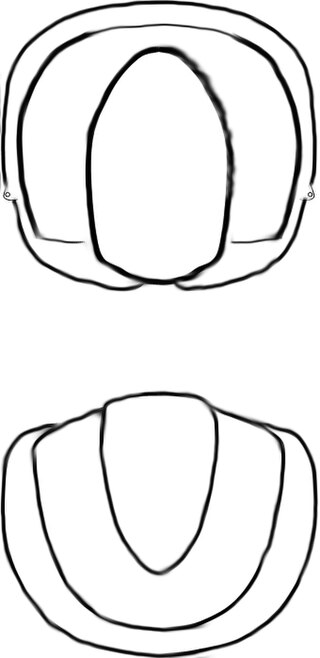
Oodiscus is an extinct genus of small size trilobite, with three known species. It lived during the Toyonian in what are now Canada and the USA.
Stigmadiscus Rasetti, 1966, is a genus of Lower Cambrian Eodiscinid trilobite belonging to the family Weymouthiidae Kobayashi (1943) Order Agnostida It lived during the Botomian stage, = late Lower Cambrian Stage 4 ; the upper Botomian Stage boundary corresponds to base of both the Middle Cambrian Wuliuan stage and Miaolingian Series.
Meniscuchus is an extinct genus from a well-known class of fossil marine arthropods, the trilobites. It lived during the Botomian stage, which lasted from approximately 522 to 516 million years ago. This faunal stage was part of the Cambrian Period. Meniscuchus has been found in the USA, Canada, Russia and Australia.

Dicerodiscus is an extinct genus from a well-known class of fossil marine arthropods, the trilobites. It lived during the early part of the Botomian stage, in China. Four species have been assigned to it. Dicerodiscus is unique for an eodiscoid in having conspicuous and curved spines that are attached anteriorly, and at their base are directed outward perpendicular to the midline, before gradually bending further backwards.
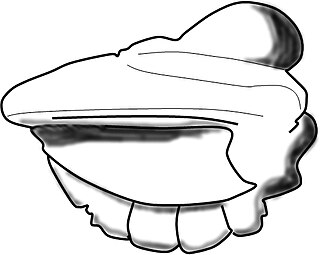
Chelediscus is a genus of Eodiscinid trilobite belonging to the family Weymouthiidae Kobayashi T. (1943), Order Agnostida Salter (1864). The Treatise assigns this genus to the Calodiscidae; Cotton and Fortey (2005) however move it to the Weymouthiidae. Chelediscus lived during the later part of the Botomian stage.

Tsunyidiscus is a trilobite belonging to the suborder Eodiscina. Tsunyidiscus appeared near the end of the Lower Cambrian, during the late Atdabanian stage of geologic time and some collections suggest it may have survived into the Botomian. The genus is very small, oculate and isopypous with a narrow dome-shaped glabella and a narrow bullet-shaped pygidial axis. Thorax consists of three segments. Tsunyidiscus is the only genus currently attributed to the family Tsunyidiscidae.

Pagetia is a genus of small trilobite, assigned to the Eodiscinid family Pagetiidae and which had global distribution during the Middle Cambrian. The genus contains 55 currently recognized species, each with limited spatial and temporal ranges.
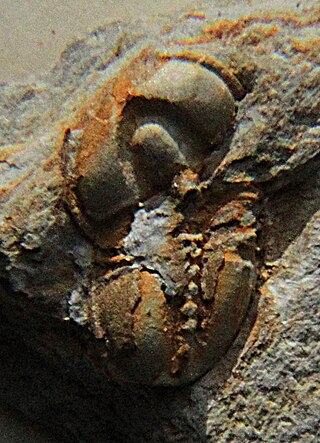
Eodiscina is trilobite suborder. The Eodiscina first developed near the end of the Lower Cambrian period and became extinct at the end of the Middle Cambrian. Species are tiny to small, and have a thorax of two or three segments. Eodiscina includes six families classified under one superfamily, Eodiscoidea.
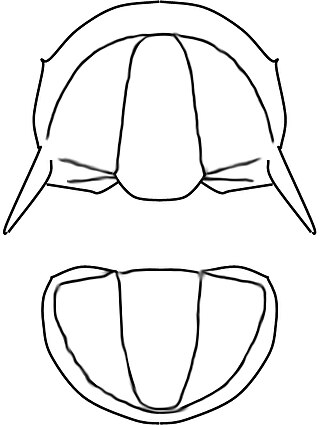
Litometopus is an extinct genus from a well-known class of fossil marine arthropods, the trilobites. It lived during the Botomian stage.
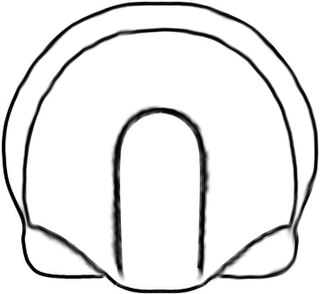
Mallagnostus Howell, 1935, is a trilobite genus belonging to the family Weymouthiidae Kobayashi T. (1943), Order Agnostida Salter (1864) according to Whittington et al. 1997. It lived during the late Lower Cambrian, with remains found in USA, Canada (Newfoundland), Spain, England, Russia, Mongolia, and the early Middle Cambrian as reported from China and Russia (Yakutia).

The Weymouthiidae are an extinct family of eodiscinid agnostid trilobites. They lived during the late Lower Cambrian and earliest Middle Cambrian in the so-called Olenellus- and Eokochaspis-zones in the former paleocontinents of Laurentia, Avalonia, Gondwana. The Weymouthiidae are all blind and lack free cheeks.
Tannudiscus Pokrovskaya (1959) is a genus of eodiscinid trilobites belonging to the family Weymouthiidae Kobayashi T. (1943), Order Agnostida. It lived during the late Lower Cambrian, with remains found in Canada (Newfoundland), China (Gansu), The United Kingdom (England), and the Russian Federation.

Jinghediscus Xiang & Zhang, 1985 is a genus of Eodiscinid trilobite belonging to the family Weymouthiidae Kobayashi T. (1943), Order Agnostida It lived during the lower Middle Cambrian, with remains found in China (Xinjiang) and Australia (Queensland).
Anabaraspis is a genus of redlichiid trilobite, A. splendens occurs in the uppermost Lower Cambrian and lowest Middle Cambrian of Russia. In Anabaraspis, there is an extended area in front of the glabella which is not differentiated in a border and a preglabellar field. It is a unique character in the family Paradoxididae.

Serrodiscus Richter and Richter 1941. is a genus of eodiscinid trilobite belonging to the family Weymouthiidae Kobayashi T. (1943), Order Agnostida. It lived during the late Lower Cambrian, with remains found in Canada, China (Gansu), The United Kingdom (England), Germany (Silesia), Poland, the Russian Federation, and the United States. It is named for the spines on the ventral side of the pygidium, which give it a serrated impression.















